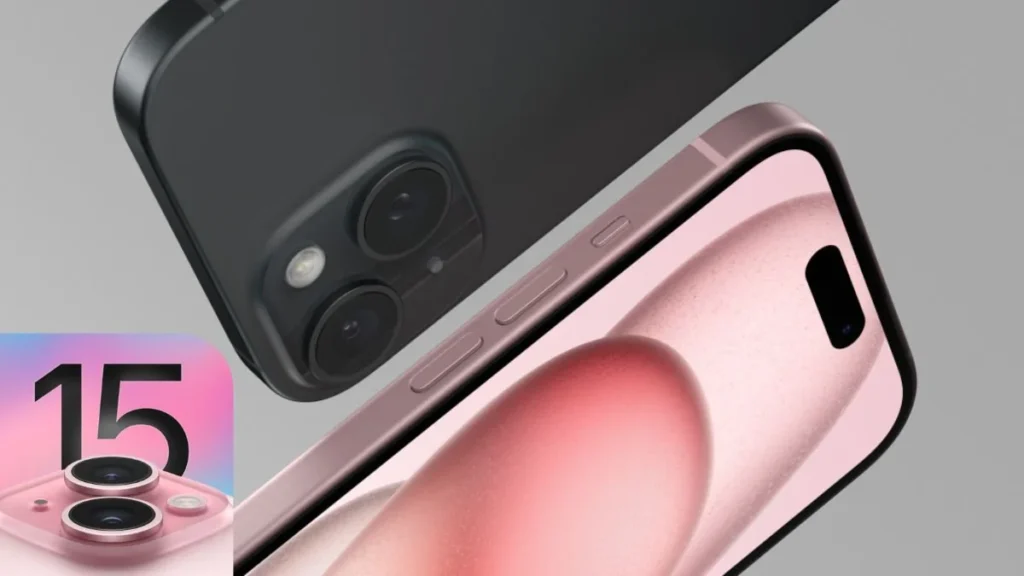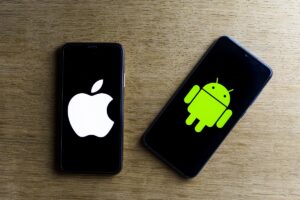Fifteen years ago, Apple introduced a groundbreaking product that would forever change the way we interact with technology. The original iPhone, released in 2007, marked the beginning of a transformative journey that has continued through the years. With each new model, Apple pushed the boundaries of innovation, shaping the smartphone landscape and leaving an indelible mark on the tech world. In this article, we will explore the evolution of the iPhone and its accompanying iOS software, examining the key features and differences that have defined each model.

iPhone (2007)
The original iPhone, often referred to as the iPhone 2G, revolutionized the mobile industry. It featured a 3.5-inch display, a 2-megapixel camera, and a sleek, all-touchscreen interface. iOS was still in its infancy, but it introduced the world to multi-touch gestures, a revolutionary concept at the time.
Key Features: Revolutionary touch interface, mobile web browsing, visual voicemail, and the App Store (added in 2008).
iPhone 3G (2008)
The iPhone 3G retained the design of its predecessor but introduced 3G connectivity, making web browsing and data speeds significantly faster. GPS capabilities were also added, transforming the device into a navigational tool.
Key Features: 3G connectivity, GPS, and the App Store’s expansion with third-party apps.
iPhone 3GS (2009)
The iPhone 3GS brought improved performance with a faster processor and introduced video recording for the first time. Voice Control was also introduced, laying the foundation for future voice assistants like Siri.
Key Features: Faster processor, video recording, and Voice Control.
iPhone 4 (2010)
The iPhone 4 featured a significant design overhaul, with a glass back and a Retina display, offering sharper visuals. It also introduced FaceTime, Apple’s video calling feature, and a front-facing camera.
Key Features: Retina display, FaceTime, and the A4 chip for improved performance.
iPhone 4S (2011)
The iPhone 4S built upon its predecessor’s success, offering a more powerful A5 chip and introducing Siri, Apple’s voice-activated personal assistant.
Key Features: Siri, A5 chip, and improved camera performance.
iPhone 5 (2012)
The iPhone 5 brought a larger 4-inch display and a thinner, lighter design. It also introduced LTE connectivity, significantly enhancing data speeds.
Key Features: Larger display, LTE connectivity, and the A6 chip for improved performance.
iPhone 5S (2013)
The iPhone 5S introduced the Touch ID fingerprint sensor, setting the stage for biometric security features. It also included the A7 chip, making it the first 64-bit smartphone.
Key Features: Touch ID, A7 chip, and M7 motion coprocessor.
iPhone 6 and 6 Plus (2014)
The iPhone 6 and 6 Plus featured larger displays, 4.7 inches and 5.5 inches, respectively, and a thinner design. This marked the beginning of the “Plus” line, catering to users who preferred larger screens.
Key Features: Larger displays, A8 chip, and optical image stabilization (6 Plus).
iPhone 6S and 6S Plus (2015)
The iPhone 6S and 6S Plus improved performance with the A9 chip, introduced 3D Touch, and upgraded the cameras.
Key Features: 3D Touch, A9 chip, and improved camera technology.
iPhone SE (2016)
The iPhone SE harked back to the design of the iPhone 5 but packed it with modern internals, including the A9 chip and Touch ID. It appealed to users who preferred a smaller form factor.
Key Features: Compact design, A9 chip, and affordable pricing.
iPhone 7 and 7 Plus (2016)
The iPhone 7 and 7 Plus eliminated the headphone jack, introducing stereo speakers and water resistance. The 7 Plus introduced a dual-camera system for improved photography.
Key Features: Water resistance, dual-camera system (7 Plus), and A10 Fusion chip.
iPhone 8 and 8 Plus (2017)
The iPhone 8 and 8 Plus retained a similar design but introduced wireless charging. They also featured the A11 Bionic chip for enhanced performance.
Key Features: Wireless charging, A11 Bionic chip, and augmented reality capabilities.
iPhone X (2017)
The iPhone X was a design departure, featuring an edge-to-edge OLED Super Retina display and Face ID, replacing the home button with gesture-based navigation.
Key Features: Face ID, Super Retina display, and Animoji.
iPhone XS, XS Max, and XR (2018)
These models built upon the iPhone X’s success, with the XS and XS Max offering OLED displays and improved cameras. The XR featured an LCD Liquid Retina display and came in a variety of colors.
Key Features: OLED displays (XS and XS Max), Liquid Retina display (XR), and A12 Bionic chip.
iPhone 11, 11 Pro, and 11 Pro Max (2019)
The iPhone 11 series introduced significant camera improvements, including an ultra-wide lens. The Pro models featured a triple-camera system, while all models received performance boosts from the A13 Bionic chip.
Key Features: Ultra-wide camera (11 series), A13 Bionic chip, and Night Mode.
iPhone 12:
- Announced: October 13, 2020
- Released: October 23, 2020
Key Features:
- Display: 6.1-inch Super Retina XDR OLED with Ceramic Shield glass.
- Chipset: Apple A14 Bionic (5 nm).
- Camera: Dual 12 MP rear cameras with Night Mode and Dolby Vision HDR.
- Memory: Available in 64GB, 128GB, and 256GB storage options.
- Battery: Li-Ion 2815 mAh with fast charging and wireless charging support.
- OS: iOS 14.1, upgradable to iOS 17.1.
- Other: IP68 water resistance, 5G connectivity, Face ID, and more.
A superpowerful chip. An advanced dual‑camera system. A Ceramic Shield front that’s tougher than any smartphone glass. And a bright, beautiful OLED display. iPhone 12 has it all — in two great sizes.
iPhone 13:
- Announced: September 14, 2021
- Released: September 24, 2021
Key Features:
- Display: 6.1-inch Super Retina XDR OLED with Ceramic Shield glass.
- Chipset: Apple A15 Bionic (5 nm).
- Camera: Dual 12 MP rear cameras with sensor-shift OIS and Night Mode.
- Memory: Available in 128GB, 256GB, and 512GB storage options.
- Battery: Li-Ion 3240 mAh with fast charging and wireless charging support.
- OS: iOS 15, upgradable to iOS 17.1.
- Other: IP68 water resistance, 5G connectivity, Face ID, and more.
A lightning‑fast chip. A leap in battery life. And all‑new photo and video capabilities. iPhone 13 lets you do things you never could before — in two great sizes.
iPhone 14:
- Announced: September 7, 2022
- Released: September 16, 2022
Key Features:
- Display: 6.1-inch LTPO Super Retina XDR OLED with Ceramic Shield glass and 120Hz refresh rate.
- Chipset: Apple A16 Bionic (4 nm).
- Camera: Triple 48 MP rear cameras with sensor-shift OIS and 3x optical zoom, TOF 3D LiDAR scanner.
- Memory: Available in 128GB, 256GB, 512GB, and 1TB storage options.
- Battery: Li-Ion 3200 mAh with fast charging and wireless charging support.
- OS: iOS 16, upgradable to iOS 17.1.
- Other: IP68 water resistance, 5G connectivity, Face ID, and more.
iPhone 15:

- Announced: September 12, 2023
- Released: September 22, 2023
Key Features:
- Display: 6.1-inch LTPO Super Retina XDR OLED with Ceramic Shield glass, 120Hz refresh rate, and Always-On display.
- Chipset: Apple A17 Pro (3 nm).
- Camera: Triple 48 MP rear cameras with sensor-shift OIS, 3x optical zoom, TOF 3D LiDAR scanner, and spatial video recording.
- Memory: Available in 128GB, 256GB, 512GB, and 1TB storage options.
- Battery: Li-Ion 3274 mAh with fast charging, wireless charging, and reverse wired charging support.
- OS: iOS 17, upgradable to iOS 17.1.
- Other: IP68 water resistance, 5G connectivity, Face ID, Ultra Wideband 2 (UWB) support, and more.
- The iPhone 15 comes in new colors: pink, yellow, green, blue and black. …
- The iPhone 15 lineup features an all-new brushed titanium design. …
- The iPhone 15 lineup is now USB-C compatible, with the Pro models capable of fast data transfers to a Mac via USB-C 3.0.
Conclusion
The journey of the iPhone and iOS over the past 15 years has been marked by continuous innovation. From the original iPhone’s revolutionary touch interface to the latest models’ advanced camera technology, Apple has consistently pushed the envelope, setting the standard for the smartphone industry. As we look forward to what the future holds for the iPhone, one thing remains clear: its legacy of revolutionizing the way we connect, work, and play will endure for years to come.


